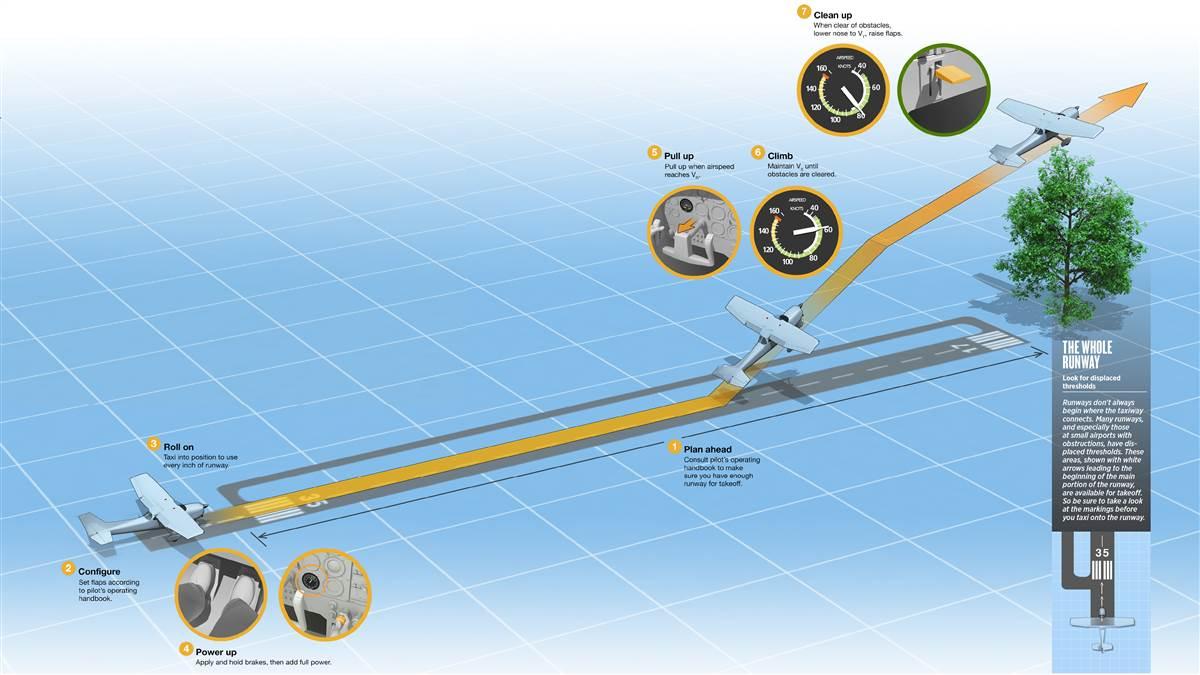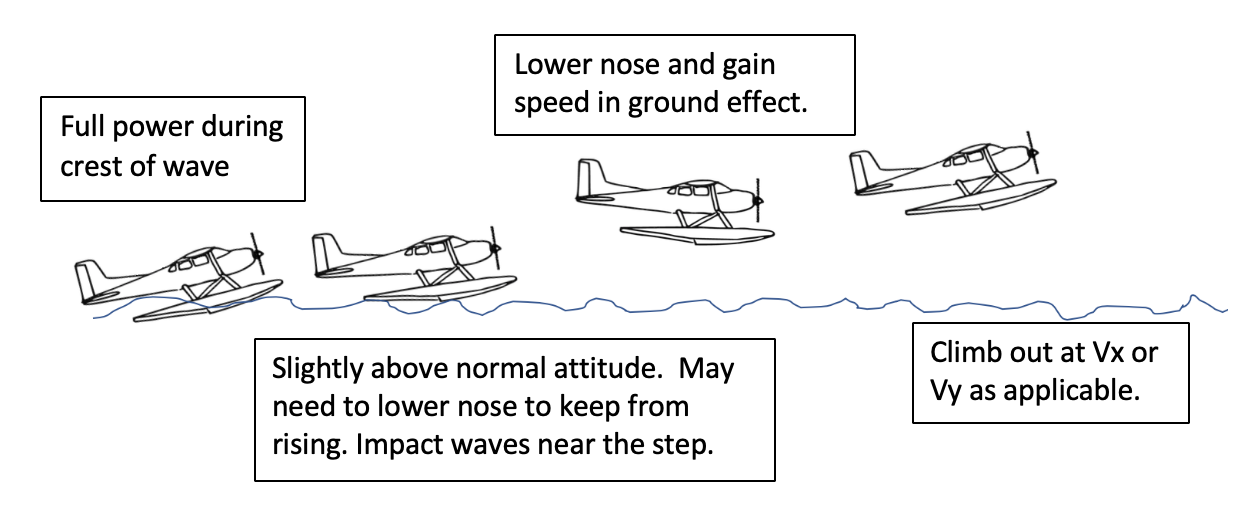Explain the Different Types of Take Offs and Landings
The main reason why these may be used occasionally is to assist if were landing in heavy fog or other very tricky conditions. Simply enter your name and email address.

Technique Short Field Takeoff Aopa
Snow Ice and Slush.

. Landing is the last part of a flight where a flying aircraft or spacecraft or animals returns to the groundWhen the flying object returns to water the process is called alighting although it is commonly called landing and touchdown as wellA normal aircraft flight would include several parts of flight including taxi takeoff climb cruise descent and landing. During landing we want high lift and high drag so the flaps and slats will be fully deployed. Different Types of Aircraft Takeoff and Landing 1Horizontal Takeoff Landing HOTOL for Horizontal Take-Off and Landing was a British design for an Airbreathing jet.
Emphasize the slight lower of the hips longer stride and flat foot strike on the penultimate. They match the PERF pages in the MCDU see Preparing the MCDU. Bolter aeronautics Brodie landing system.
This happens in two scenarios. En route - The aircraft travels through one or more center airspaces and nears the. The A320 uses flight phases to manage different parts of a flight.
The terminal glide over a 50 ft obstacle to touchdown 2. Just as in the takeoff the landing maneuver consists of two parts. Our previous calculations included only the actual ground roll distance but a complete definition may also include the portion of the approach needed to clear a defined obstacle and that needed to transition from a steady approach glide to touchdown the flare distance.
We have systems that allow for automatic landings if necessary however its rare to use these. However for a maximum performance landing short field landing procedure very little flare is. The landing ground run Some calculations include a flare from the landing glide to the touchdown.
Aircraft taking off may use the portion of the runway before the displaced threshold. A displaced threshold will reduce the available runway available for landing. During landing the aircraft touches down at the landing speed and decelerates to zero speed.
Tail Wheel Type Landing Gear Tail wheel-type landing gear is also known as conventional gear because many early aircraft use this type of arrangement. Also emphasize the angled hip position but tall stance at takeoff and aggressive foot strike and knee drive on the plant. Approach and Landing Minimums.
And with a higher AOA the downward. This does two things. In Microsoft Flight Simulator pushing is clicking the knob UP and pulling is clicking the knob DOWN.
Touch and Go landings. 2Vertical Take-Off and Landing. Departure - The plane lifts off the ground and climbs to a cruising altitude.
For instance during takeoff an aircraft starts at zero speed and accelerates to the takeoff speed to become airborne. In order to reduce the likelihood of a rejected take-off resulting in an over-run or other undesirable outcome it is often stated in the SOPs that once above a specified speed during the take-off roll the take-off should only be rejected for specified occurrences. These are preflight takeoff climb cruise descent approach go around done.
4 Cone Penultimate Drill. Get instant access to Flight Trainings special issue titled You Can Fly. On takeoff we want high lift and low drag so the flaps will be set downward at a moderate setting.
In both of these scenarios your downward sweeping blade is at a much higher angle-of-attack than your upward sweeping blade. As it comes off the ground you want to start reducing back pressure slightly on the yoke to prevent your plane. When the wheels touch down we want to decrease the lift to keep the plane on the ground so you will often see spoilers deployed on the top of the wing to kill the lift.
Consider utilizing soft field takeoff and landing procedures minimizing opportunities to kick up hazards or lose control. The construction takeoff process itself is simple and involves highlighting an item one by one with a highlighter while simultaneously clicking a hand counter to track the quantity in the case of counted each. A 3-feet wide white displaced threshold bar indicates the beginning of the landing portion of a runway Figure 5.
1 Your plane is flying at a high angle-of-attack takeoff and slow-flight are good examples and. Consider increasing margins for aborting takeoff to avoid losing control during an abort. Preflight-This portion of the flight starts on the ground and includes flight checks push-back from the gate and taxi to the runway.
The core of these calculations can be found in the multi-part ProcessLanding routine which is called from part 6 of the ApplyFlightModel routine just after the results of the flight model calculations have been applied to the plane to alter its orientation velocity. Advanced Takeoff and Landing Techniques. The specified speed is typically 80 knots.
Lets take a look at how Aviator implements take-offs landings and taxiing. This beginning pilots resource guide explains what you can expect from your introductory flight through initial trainingand how to turn your dream of flying into reality. Below this speed the take-off may be.
The construction takeoff is the starting point to creating and accurate estimate during the construction cost estimating process. 1 it reduces the weight on your nosewheel and the stress it receives from the softrough field and 2 it allows you to lift off as soon as possible. At Virgin Australia all take-offs are manually flown by pilots.
Takeoff - The pilot powers up the aircraft and speeds down the runway. Three basic arrangements of landing gear are used. We are trained and tested on these systems regularly but for the vast.
The short answer here is no. When cleared for the approach the published off airway feeder routes that lead from the en-route structure to the IAF are part of the approach clearance. Tail wheel-type landing gear also known as conventional gear tandem landing gear and tricycle-type landing gear.
The opposite of the takeoff procedure is the landing procedure. If a feeder route to an Instrument Approach Fix IAF begins at a fix located along the route of flight prior to reaching the holding fix and clearance for. The important factors of takeoff or landing performance are.
Snow ice and slushy conditions create a hazardous runway environment. Other Facts About Threshold Bar. As soon as a plane lands and clears the active runway the pilots receive taxi instructions from ground controllers.
Your Path to Become a Pilot. During the takeoff roll your nose wheel will lift of first. The takeoff or landing speed is generally a function of the stall speed or minimum flying speed.
Soft field takeoffs and landings short field takeoffs and landings no-flap takeoffs and landings forward slips to landings and crosswind landings. As in takeoff landing includes several possible segments as shown in Figure 73. 2 Youre taking off in a tailwheel airplane.
Step toward the fourth cone and finishing with a takeoff plant and pop -up on the fourth cone. Here are the 10 steps from arrival to take-off.

Landing And Takeoff Lto Sequence Download Scientific Diagram


Comments
Post a Comment